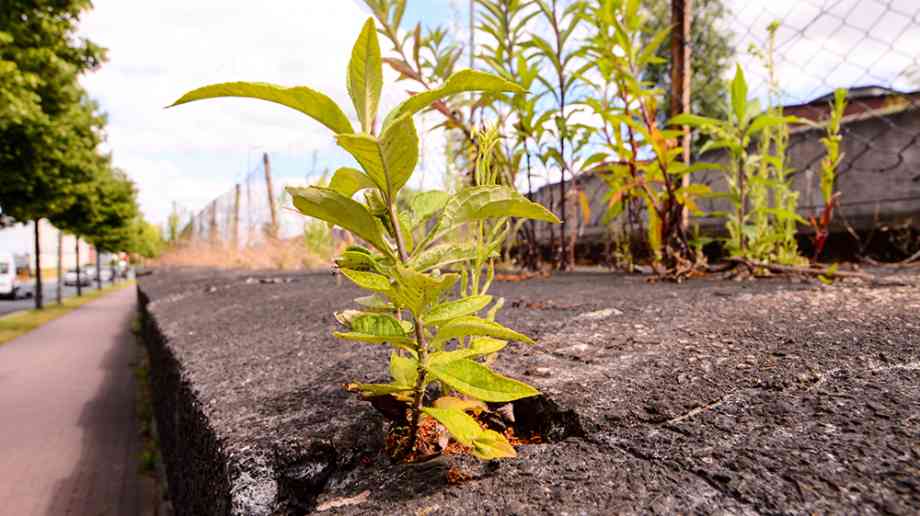Sue Robb of 4Children talks to Julie Laughton and Alison Britton from the Department for Education about the role of childminders in delivering the 30 hours free entitlement.

Identifying invasive species
Invasive species pose a significant problem for local authority grounds care teams - and ignoring the problem only makes it worse
Identifying invasive plant species is important because of the significant ecological and economic threats they present. These species, which are non-native to the local ecosystem, can outcompete the native vegetation, disrupt natural food chains, and change the balance of an ecosystem. This can lead to reduced biodiversity, habitat degradation, and even the extinction of native species.
Invasive plants can rapidly spread and take over areas. They can dominate available resources like water, nutrients, and sunlight, and therefore deprive native plants. This not only affects plant life but also cascades through the entire ecosystem, impacting animals that rely on native plants for food and shelter.
Economically, invasive plants can result in substantial costs. They can clog waterways, damage infrastructure, and reduce agricultural productivity. Personnel efforts to control invasive species can also strain resources. Therefore, early identification of these species is crucial for the best management and prevention of their establishment in the first place.
Regular monitoring and prompt action are essential to curb the spread of invasive plants. By identifying these species at an early stage, experts can implement targeted strategies to eradicate or manage them before the problem gets worse. Overall, identifying and addressing invasive plant species is essential in safeguarding the balance of ecosystems and preserving the biodiversity on which the local environment depends.
Some of the most troublesome species for the UK include Japanese knotweed, giant hogweed, Himalayan balsam and New Zealand pigmyweed.
Japanese knotweed
Japanese knotweed is one of the most common and well-known species of invasive plants in the UK. It often grows along rivers, canals, motorways and railways and can be recognised by its red shoots and hollow, bamboo-ish stems. It has flat-based leaves and produces a small white flower in late summer.
Known to grow through walls and tarmac, it can easily damage infrastructure. A hardy plant, it is able to grow in any soil type and damages the growth of native plants. Japanese knotweed spreads easily and quickly and is fast to establish in new areas. It is also difficult to remove, due to an expansive root system and the fact that it can regenerate from tiny fragments.
Giant hogweed
Giant Hogweed presents a danger to animals and humans due to its poisonous sap. If the sap touches skin, it can cause severe irritation and blisters. The burns from giant hogweed can last several months and even after they have died down, the affected skin can be sensitive to light for many years.
Giant Hogweed has a green stem, which grows in early spring and turns into a dark
red with purple spots in the summer. The plant has large, dark green leaves and clusters of small white flowers. It can grow up to 10 feet high.
Giant hogweed can be found in almost every area, but thrives in habitats where the soil has been disturbed, such as riverbanks, railway embankments or derelict land.
The plant presents a problem as each one can disperse up to 50,000 seeds that remain viable in the ground for 15 years. The seeds can be spread by birds or other animals or transported along waterways.
As with other invasive species, it also poses a threat to native plants as it spreads.
As giant hogweed dies back in the winter, there is also the threat of soil erosion as other vegetation has already been lost.
Himalayan balsam
Himalayan Balsam is often found on riverbanks and waste places. It can tolerate low light, while at the same time, shading out and killing off other plants.
The plant grows tall and has clusters of purple-pink helmet-shaped flowers from June to October. The flowers are replaced by seed pods, which then explode, and can shoot seeds up to 7 metres away. Each plant can produce up to 800 seeds.
Company Focus
Located in Bromley, Japanese Knotweed Eradication Ltd has been providing solutions in the treatment and removal of Japanese Knotweed (Fallopia Japonica) for over a decade. During this time we have mastered a repertoire of methods, from herbicidal treatments to landscaping solutions, tailored to address the unique challenges our clients face with this pervasive weed.
Event Diary
UKREiiF has quickly become a must-attend in the industry calendar for Government departments and local authorities.
The multi-award-winning UK Construction Week (UKCW), is the UK’s biggest trade event for the built environment that connects the whole supply chain to be the catalyst for growth and positive change in the industry.
Supplier Profiles
Geo Energy
At GeoEnergy Design, we're on a mission to disrupt the traditional way heating and cooling ha
Latest Features
Professor Harith Alani, director of the Knowledge Management Institute at the Open University explains how AI can be used for good and bad.
Alex Lawrence, head of health & social care, techUK sets out techUK’s Five Point Plan for CareTech.












